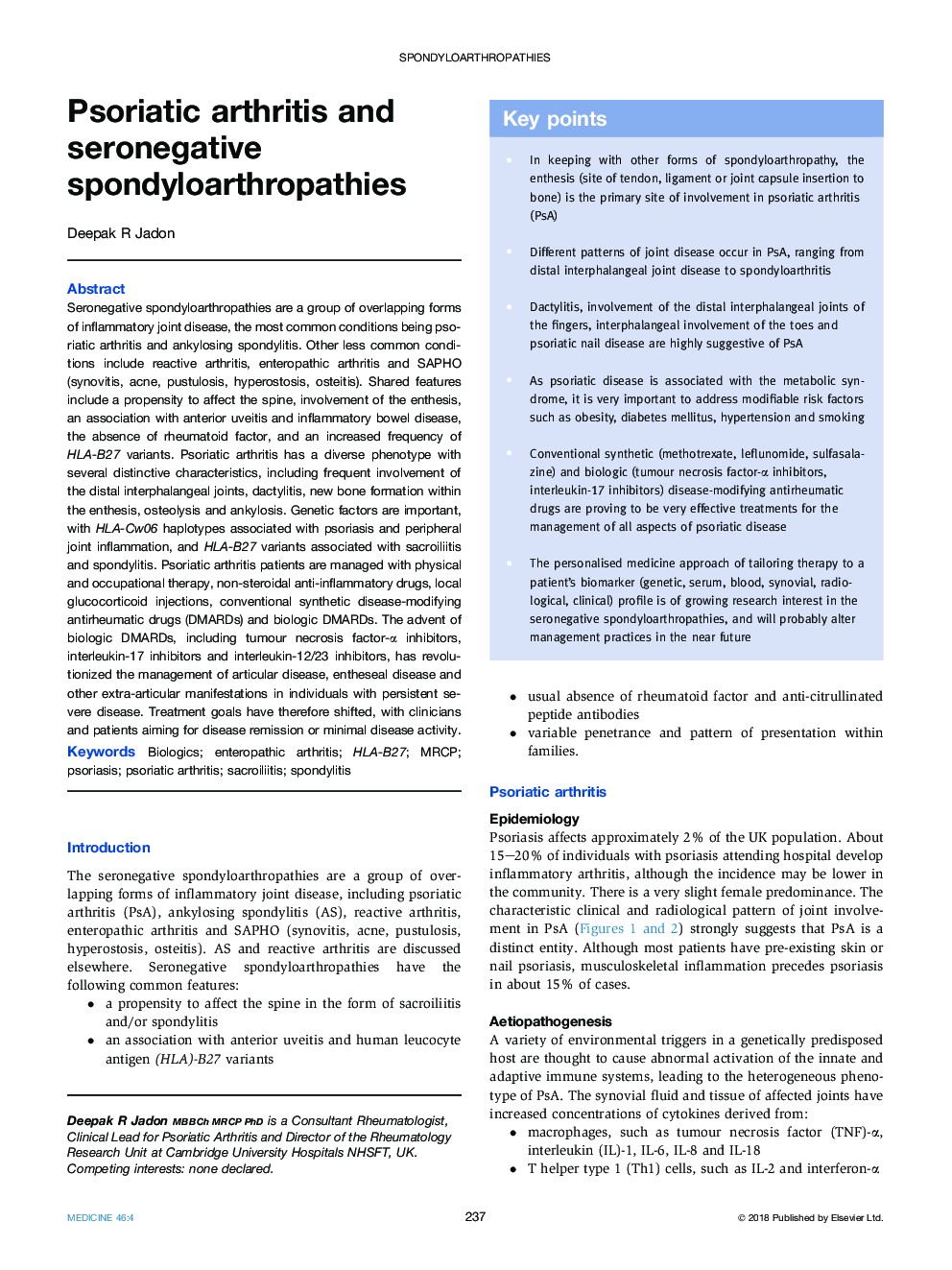| Article ID | Journal | Published Year | Pages | File Type |
|---|---|---|---|---|
| 8764043 | Medicine | 2018 | 6 Pages |
Abstract
Seronegative spondyloarthropathies are a group of overlapping forms of inflammatory joint disease, the most common conditions being psoriatic arthritis and ankylosing spondylitis. Other less common conditions include reactive arthritis, enteropathic arthritis and SAPHO (synovitis, acne, pustulosis, hyperostosis, osteitis). Shared features include a propensity to affect the spine, involvement of the enthesis, an association with anterior uveitis and inflammatory bowel disease, the absence of rheumatoid factor, and an increased frequency of HLA-B27 variants. Psoriatic arthritis has a diverse phenotype with several distinctive characteristics, including frequent involvement of the distal interphalangeal joints, dactylitis, new bone formation within the enthesis, osteolysis and ankylosis. Genetic factors are important, with HLA-Cw06 haplotypes associated with psoriasis and peripheral joint inflammation, and HLA-B27 variants associated with sacroiliitis and spondylitis. Psoriatic arthritis patients are managed with physical and occupational therapy, non-steroidal anti-inflammatory drugs, local glucocorticoid injections, conventional synthetic disease-modifying antirheumatic drugs (DMARDs) and biologic DMARDs. The advent of biologic DMARDs, including tumour necrosis factor-α inhibitors, interleukin-17 inhibitors and interleukin-12/23 inhibitors, has revolutionized the management of articular disease, entheseal disease and other extra-articular manifestations in individuals with persistent severe disease. Treatment goals have therefore shifted, with clinicians and patients aiming for disease remission or minimal disease activity.
Keywords
Related Topics
Health Sciences
Medicine and Dentistry
Medicine and Dentistry (General)
Authors
Deepak R. Jadon,
